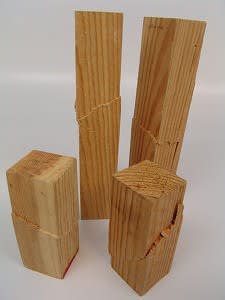XR250
Structural
- Jan 30, 2013
- 5,870
It is my understanding that you were not supposed to attach a vertical load to an LVL below the neutral axis. I have a situation where I have an LVL (4) 1 3/4x18 supporting framing on top and 2 ft. of brick on the face with a lintel. If I use a an L5x3 1/2x1/4 lintel fastened at 16 inches on center, the shear load is 90 lbs. per connection. The fasteners would be located 3 3/4" from the bottom of the beam. Is this enough to worry about or should I weld some tabs to the lintel to get the bolts above the neutral axis?

